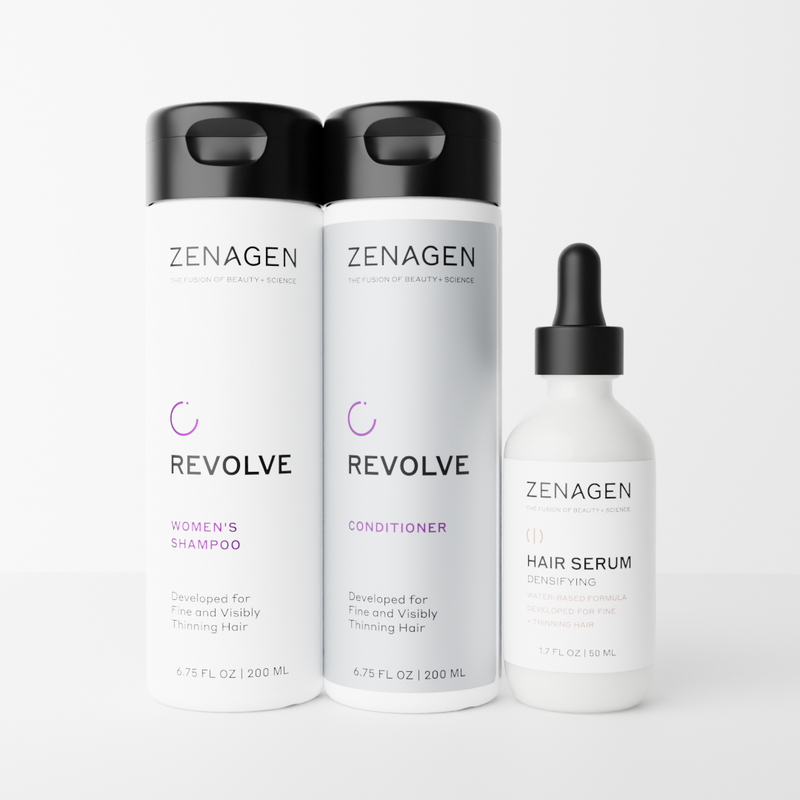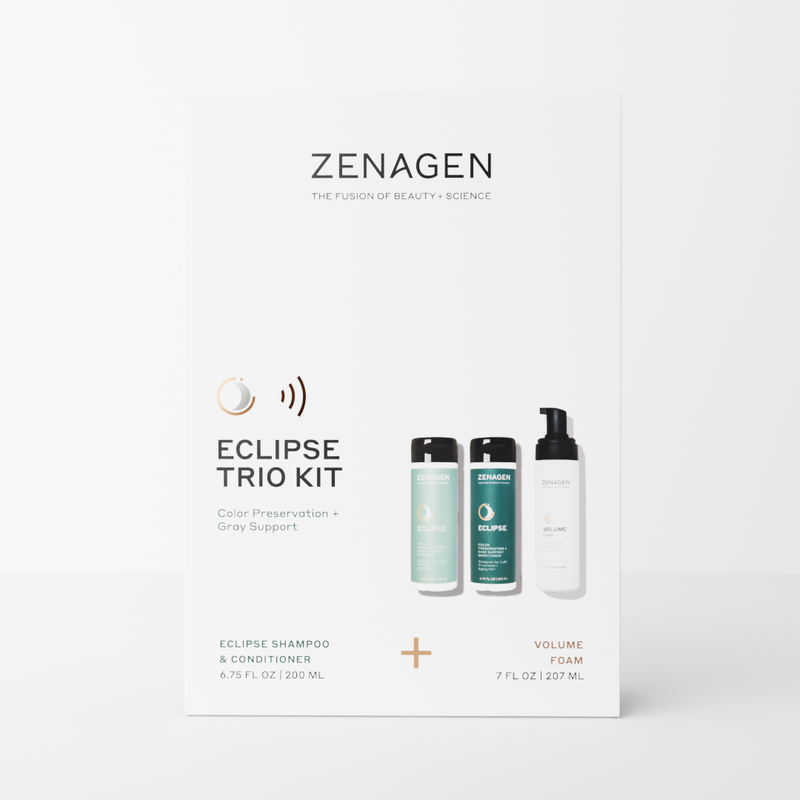🌈 Why Does Color Fade?
The Science Behind Why Color Doesn’t Stay Vibrant Forever
Whether you're rocking bold fashion shades or subtle balayage, one universal truth remains: color changes over time. But why?
Here are the key reasons:
1. Water Causes Dye Molecules to Escape
Every time you wash your hair, water swells the cuticle (the outer layer), allowing pigment molecules to slip out.
Even the cleanest water — with no shampoo — causes some fading.
Zenagen Insight:
A healthy, conditioned cuticle stays smoother and helps retain color vibrancy longer.
2. Heat Opens the Cuticle
Blow dryers, hot tools, and even hot showers lift the cuticle slightly, making it easier for pigment to escape.
Zenagen Insight:
Heat-protective formulas and moisture-balancing products help keep the cuticle more resilient.
3. UV Light Breaks Down Pigment
Sun exposure acts like bleach — it degrades the bonds holding color molecules together, especially for reds and fashion shades.
Zenagen Insight:
Antioxidants found in Zenagen formulations (like green tea) help defend hair from environmental stressors that contribute to fading.
4. Shampoo Type Matters
Harsh surfactants, clarifying shampoos, and high-pH formulas lift the cuticle, causing color to rinse away faster.
Zenagen Insight:
Zenagen’s Eclipse line is designed to support color longevity through gentle cleansing and scalp-balancing care.
5. Damage Makes Fading Faster
Dryness, breakage, or porous strands can’t hold onto dye as well as healthy hair.
Damaged cuticles have tiny gaps that release color quickly.
Zenagen Insight:
Strengthening, hydrating systems (like Evolve) help improve softness and shine so color looks richer, healthier, and more even.
🌫️ Why Does Hair Turn Gray?
Understanding the Natural, Beautiful Process of Pigment Change
Graying is a universal part of aging — and it’s driven by a simple biological shift.
Here’s the science in a clean, easy-to-understand way:
1. Melanin Production Slows Down
Melanin is the natural pigment that gives hair its color.
As we age, melanocytes — the cells that produce melanin — gradually become less active.
Less melanin = lighter, silver, or gray hair.
This is completely natural.
2. Genetics Play a Huge Role
Your DNA determines when your melanocytes slow down.
Some people notice grays in their 20s. Others stay dark well into their 50s.
This is normal variation — not a sign of anything being “wrong.”
3. Oxidative Stress Affects the Follicle
Every strand of hair experiences oxidative exposure from UV, environment, stress, and lifestyle factors.
Over years, this can influence how quickly pigment cells decline.
Zenagen Insight:
Antioxidant-rich ingredients help support a balanced scalp environment.
While they can’t prevent grays (nor should they claim to), they help maintain overall hair and scalp wellness.
4. The Growth Cycle Influences Pigment
During the anagen (growth) phase, hair receives pigment.
As the cycle repeats over decades, the ability to deliver consistent pigment naturally decreases — leading to gray or white strands.
This is part of the normal hair life cycle (anagen–catagen–telogen).
✨ How Zenagen Fits Into the Story
While nothing can stop natural graying — and we never make medical or drug-like claims — Zenagen can support the journey by:
-
Maintaining a healthy, balanced scalp
-
Supporting shine, smoothness, and softness for gray or color-treated hair
-
Helping with strength, moisture retention, and resilience
-
Offering color protection through Eclipse
-
Reinforcing hair’s natural vitality with antioxidant-powered botanicals
When hair is healthy, hydrated, and protected, color looks richer and gray hair looks brighter, smoother, and more refined.
🌿 The Beauty of Change
Color fading is chemistry.
Graying is biology.
Both are completely natural — and both can be embraced beautifully with the right care.
Zenagen supports hair at every stage of its life cycle, helping it look its best through every transition.



